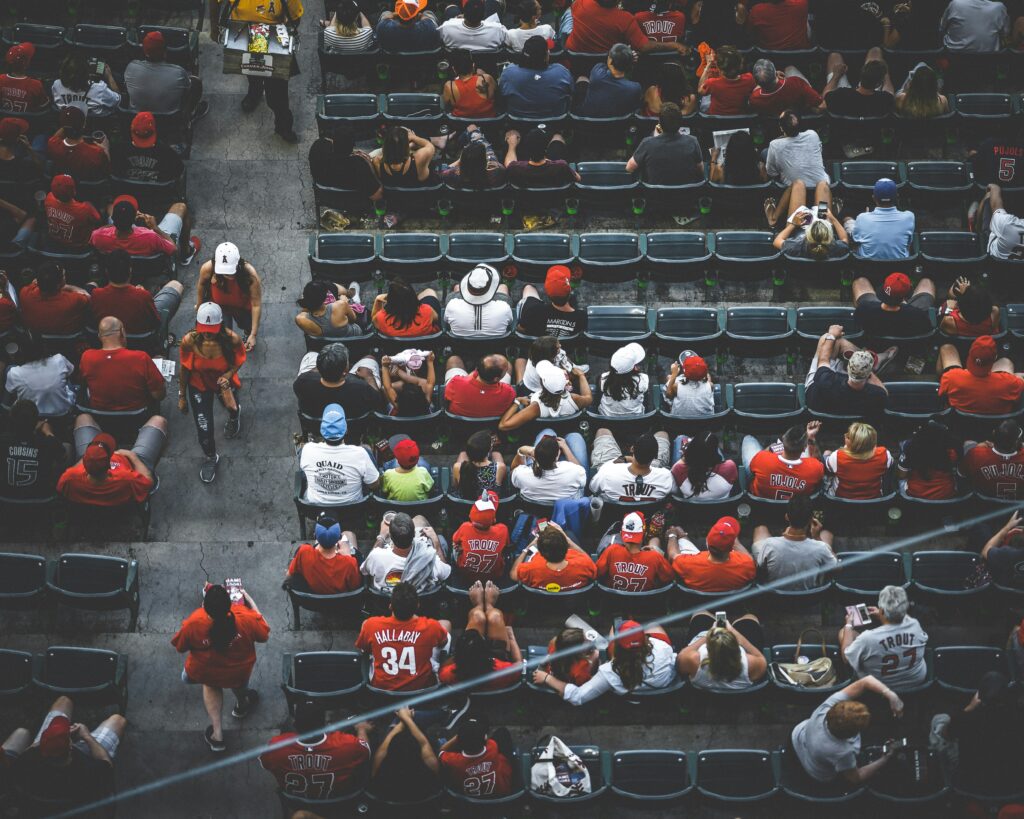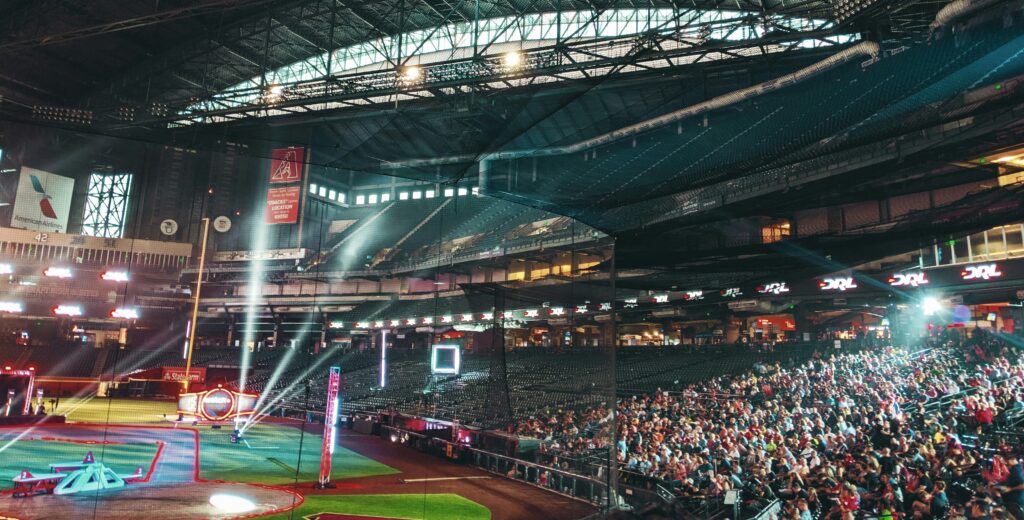Introduction: More Than Just Noise
“Team success” used to mean trophies, stats, rankings. And while those still matter, the definition has grown. Today, real success is broader—sustainable performance, cultural relevance, and the kind of loyalty that doesn’t vanish when the standings dip. Teams that win on the field but fail to connect with their community aren’t winning the long game.
That’s where fans come in. Not the fair-weather ones, but the ride-or-die types who paint their faces, show up in the rain, and know every chant by heart. Their presence changes outcomes. Not just in box-office revenue—but in the atmosphere they create. Their energy lifts players. Their expectations keep teams honest.
More than that, loyal fans offer psychological fuel. A team playing for something bigger than itself—a city, a story, a shared identity—performs with different fire. In 2024 and beyond, that crowd in the stands or the thousands online aren’t background noise. They’re the heartbeat. They’re the reason the lights come on.
The Home Advantage Is Real
Home-field advantage isn’t just a sports cliché—it’s a measurable edge that can significantly influence outcomes in competitive environments. From the roar of the crowd to the familiarity of the field, teams often elevate their performance when supported by their home community.
The Data Behind the Advantage
Several studies confirm what fans and players alike have long known: teams statistically perform better at home. This isn’t luck—it’s driven by crowd energy, routine consistency, and a psychological edge.
- Higher win rates at home across nearly all major sports leagues
- Fewer penalties and fouls called against home teams
- Enhanced focus and reduced travel fatigue
These factors combine to give home teams a quantifiable benefit, especially in close contests.
Morale Boost: The 12th Player Effect
Supporters in the stands do more than cheer—they influence outcomes. The concept of the “12th player” suggests that fans can become as impactful as an extra teammate by boosting morale and momentum.
Key morale boosters include:
- Continuous vocal support that energizes players during critical plays
- Chants and songs that build a distinct atmosphere
- Crowd reactions that disrupt opponents and sway referees
How Players Respond
Players consistently report feeling a lift when playing in front of passionate fans. The emotional surge from a loud crowd can push athletes beyond their physical limits and sharpen their mental edge.
- Increased motivation and accountability
- Stronger connection to team identity and purpose
- More consistent performance under pressure
In essence, when the crowd shows up, the team often rises with them. That bond between player and fan isn’t just symbolic—it’s performance-enhancing.
Building a Culture Around the Team
A successful team isn’t just defined by scores and stats—it’s built on a strong sense of identity embedded within its community. This sense of belonging doesn’t just happen; it’s cultivated over time through intentional connection, local involvement, and cherished traditions.
Identity and Pride That Lasts
A dedicated fanbase often reflects broader community values. When the crowd stands behind a team, they’re not just cheering—they’re expressing pride in where they come from. This collective identity is what keeps fans showing up season after season, win or lose.
- Support becomes part of the town or city culture
- Long-term loyalty often passes down through generations
- Team successes are celebrated like community milestones
Local Institutions Make a Difference
Support from local businesses, schools, and youth clubs forms the foundation for lasting team-community ties. These day-to-day connections anchor the team within its surroundings and foster local ownership.
- Schools promote team spirit early—through colors, chants, and mentorship programs
- Small businesses sponsor, host viewing events, and display team branding
- Youth and grassroots clubs serve as pipelines for future fans and players alike
Turning Tradition Into a Touchstone
The most memorable teams carry more than just trophies—they carry rituals, songs, and habits that span generations. When a game day feels like a local holiday, you know a tradition has taken root.
- Pre-game routines, chants, and specific fan rituals keep the culture alive
- Historic wins and past legends become part of the local story
- Core values (grit, teamwork, humility) reflect and reinforce the community’s own ethic
When these cultural threads align, the result is more than game-day hype—it’s a shared legacy that weaves the team into the soul of the place it calls home.
The Money Factor: Support Fuels Growth
A passionate fanbase doesn’t just create atmosphere—it drives real financial value for teams. Community engagement can be directly linked to a team’s ability to grow both on and off the field.
Revenue Streams Powered by Fans
Fan support fuels several major income sources:
- Ticket Sales: Loyal fans fill seats, driving consistent game-day revenue that helps clubs plan long-term.
- Merchandise: Branded apparel and accessories go beyond fashion—they’re mobile advertisements, identity markers, and profit centers.
- Digital Engagement: Online fans contribute through ad-supported content, streaming subscriptions, and social media metrics that attract sponsors.
Why Revenue Matters On and Off the Field
More money doesn’t just mean larger bank accounts—it translates into competitive advantages:
- Upgraded Facilities: Better stadiums, training grounds, and fan amenities improve every aspect of operations.
- Top Staff and Coaching Talent: Strong finances allow teams to hire and retain skilled coaches, trainers, and support specialists.
- Youth Development: Investment in academies and outreach programs means a deeper bench and future-ready talent.
Case Study: Small Club, Big Growth
Consider the story of AFC Wimbledon, a fan-owned club in England that rebuilt itself from scratch in 2002. Thanks to relentless community support, they climbed from the ninth tier of English football to the professional leagues.
- Fans raised funds to build a new stadium—Plough Lane—as a symbol of identity and ambition.
- Local engagement kept matchday attendance high, even in poor seasons.
- Strategic merchandise sales and grassroots marketing helped grow a national fanbase, despite limited on-field success.
Their journey shows what happens when fans buy in—literally and figuratively—to the long-term vision of a team.
Bottom Line
Financial health in sports isn’t just a corporate matter. It’s deeply personal, driven by people who care enough to show up, spend, and share. For teams, every engaged fan is an investor in future wins.
How Teams Engage and Grow Their Fanbase
Going Beyond the Hype: Social Media That Connects
In 2024, it’s not enough to post highlight reels and final scores. Audiences demand authenticity and interaction. The most successful teams use social media to bring fans closer to the action while also giving them a voice.
Effective strategies include:
- Behind-the-scenes content: pre-game rituals, locker room moments, team travel
- Interactive features: Q&As, polls, live streams with players
- Storytelling: sharing fan stories, spotlighting community heroes, and player journeys
- Platform-specific approaches: tailoring content for TikTok, Instagram Stories, Threads, and YouTube
These tactics allow teams to build trust and routine engagement—not just hype around game day.
Real-Life Outreach: Showing Up Matters
Digital reach is essential, but nothing replaces face-to-face connection. Community outreach builds goodwill and strengthens loyalty in ways no social post can match.
Common outreach efforts include:
- Charity work with local organizations
- School visits and youth clinics
- Hosting open practices, fan days, and meet-and-greets
- Giving fans access to players through autograph sessions or community games
When fans feel seen and appreciated in real life, they become emotionally invested in the team’s journey.
Turning Casual Fans Into Lifelong Supporters
Casual fans often need a nudge before they fully commit to a team. That nudge usually comes through shared values, consistent outreach, and meaningful engagement.
To convert casual interest into passionate support:
- Reward loyalty with inside access, exclusive content, or fan recognition
- Create spaces for fan interaction like forums or Discord channels
- Encourage fan-generated content and celebrate it publicly
- Involve fans in creative decisions like alternate uniforms or music playlists
Die-hard supporters aren’t just born—they’re built through intentional experiences that go beyond the scoreboard.
Staying Ready for the Long Game
When the scoreboard stops working in your favor, a team’s real foundation is tested. True community support isn’t just about celebrating wins — it’s about showing up when the seats are half full and the headlines aren’t glowing. In losing seasons, loyal fans become more than spectators. They send the message: we’re still here, and we still believe.
Teams that understand this don’t just tolerate their fans during tough stretches — they involve them. That can look like town halls, open practices, or even direct feedback loops that shape team direction. Some clubs have taken it further, letting fan groups propose ideas or weigh in on hiring decisions. Culture shifts start from the inside, but they’re kept alive by those on the outside looking in with heart.
Rebuilding becomes a shared mission. And when success returns — as it often does for the teams that build with their base — it feels earned by everyone, not just those wearing the jersey.
The Bigger Picture
Zoom out, and you’ll see the pattern: where the team thrives, the community often does too. A club’s rise can spark new business, boost local pride, and give people a reason to rally when so much else feels uncertain. Pubs fill up on game night. Kids wear the jersey to school. It becomes more than just a match—it’s shared meaning.
In divided times, sports manage something most institutions can’t: unity. Rivalries might burn hot, but they still bring neighborhoods together. People who may not agree on much still high-five after a goal. The stadium becomes neutral ground. The team becomes a language everyone speaks.
And it’s not just the now—it’s built on decades of play, struggle, and evolution. From muddy neighborhood pitches to high-tech arenas, the spirit of sport has always reflected the culture around it. For a glimpse into how far it’s come, and how it’s shaped who we are, take a look at The Evolution of Sports Equipment – A Historical Overview.
Final Thoughts
Teams can’t succeed in a vacuum. You can have world-class talent, advanced facilities, and perfect stats on paper—but none of it sticks without community. The crowd, the local pride, the shared history… that’s what roots a team in something real.
Investing in fans isn’t a nice-to-have, it’s non-negotiable. That means more than pushing merch and promo codes. It means honest presence—showing up in schools, listening to feedback, building trust season after season. The strongest foundations are built with people, not just concrete and cash.
A winning team starts from the inside out. And that inside isn’t just the locker room—it’s every supporter, every hometown kid wearing the jersey, every chant in the cold. It’s the pulse that doesn’t fade after the final whistle.




